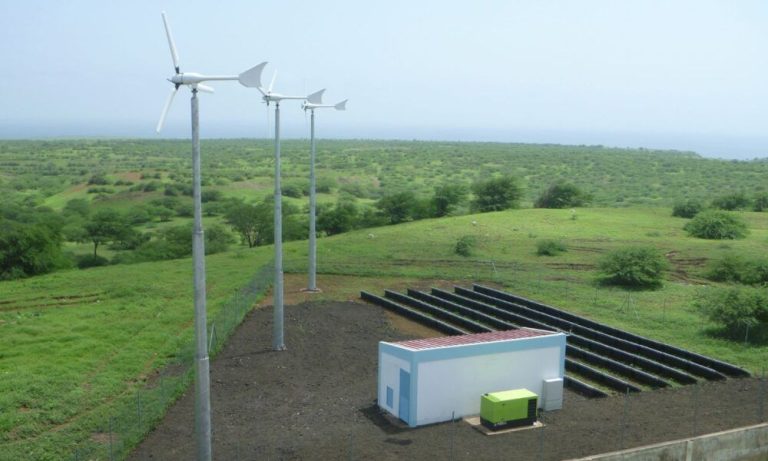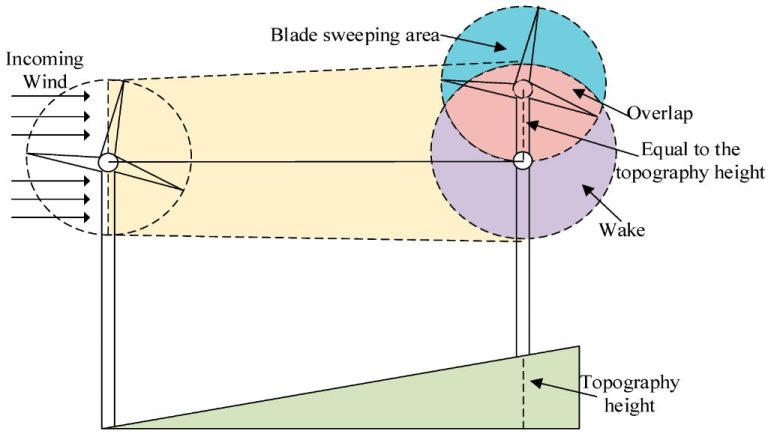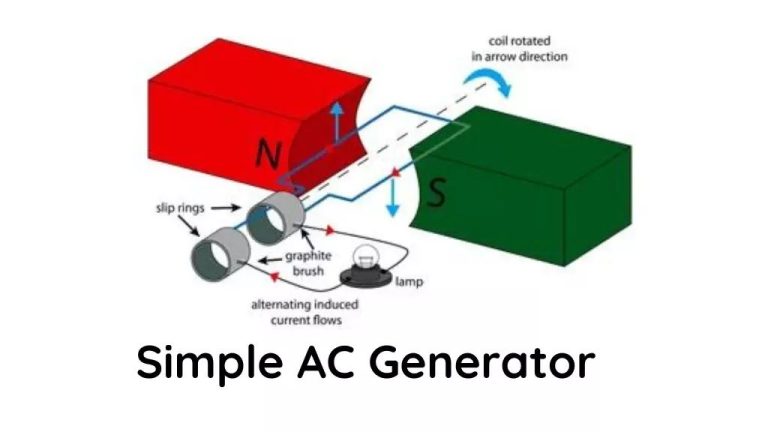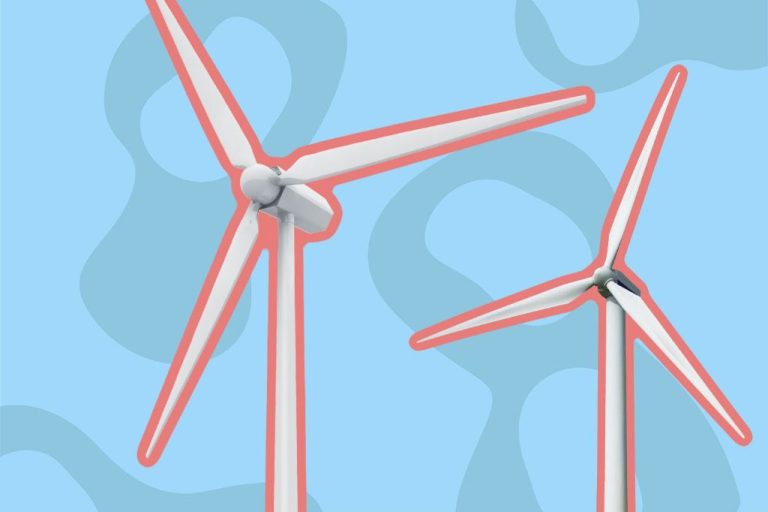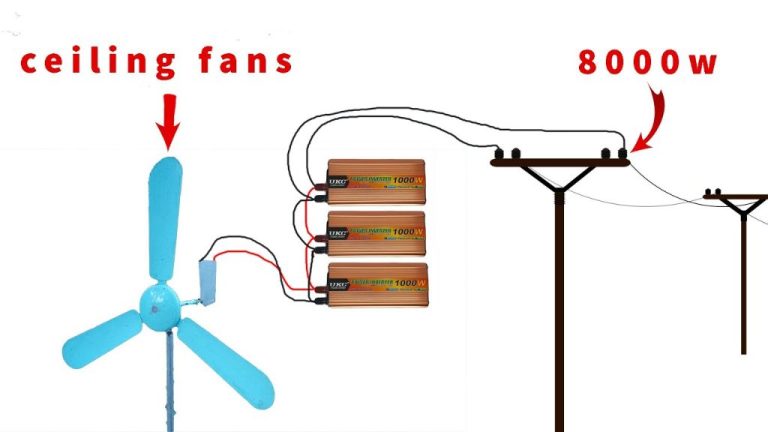How Does A Turbine Transfer Energy?
What is a Turbine?
A turbine is a machine which extracts energy from a fluid flow and converts it into useful mechanical work to power machinery. Turbines contain two main parts: a rotor assembly and a stator. At its core, a turbine uses the kinetic energy of a moving fluid to cause rotational motion. This rotational energy can then be utilized to generate electricity or provide mechanical power.
There are several common types of turbines including steam turbines, gas turbines, water turbines, and wind turbines. Despite their differences, all turbines utilize the same basic principles of fluid dynamics and rotation. The main components shared by turbines are rotor blades, a shaft, bearings, a casing, and a set of stationary vanes or nozzles. The shape and arrangement of these components can vary based on the type of turbine and its application.
In general, the fluid flows through the stator which contains fixed vanes or nozzles that direct the flow onto the rotor blades at an optimal angle. The accelerated fluid causes the curved rotor blades to spin around the shaft. This rotational energy turns a generator to produce electricity. The used fluid continues flowing through the turbine casing and exits from the back.
By harnessing the natural motion of fluids, turbines allow us to extract power in an efficient and scalable manner for electricity generation and industrial applications.
How Turbines Work
Turbines operate on basic thermodynamic principles to convert the energy from a moving fluid into rotational mechanical energy. The core component of any turbine is the turbine rotor, which consists of rotating blades attached to a shaft. As a high-velocity fluid such as steam, gas, water or air impacts the blades, it causes the rotor to spin. The rotating shaft then turns a generator to produce electricity.
There are a few key thermodynamic principles that enable this energy conversion in turbines:
- First, the fluid enters the turbine with high energy, in the form of pressure, velocity or both. This high energy fluid impacts the turbine blades and transfers some of its energy to the blades to start the rotor spinning.
- Second, as the fluid passes through the turbine, its pressure and velocity decrease as the fluid loses energy. The reduction in energy of the fluid equals the gain in kinetic energy of the spinning rotor.
- Third, the rotational kinetic energy of the turbine shaft is then converted into electricity using an electrical generator attached to the turbine.
So in summary, the high energy fluid causes the turbine blades and shaft to spin through Newton’s third law. This rotation is converted into electricity through Faraday’s law of induction in the generator. This process of harnessing a fluid’s kinetic energy exemplifies the laws of thermodynamics and allows turbines to generate power.
The Turbine Rotation System
The turbine rotation system is made up of components that allow the turbine to spin smoothly and efficiently. This includes shafts, bearings, seals, and other parts that enable rotational motion. The shaft is the main rotating part of the turbine. It is connected to the turbine blades on one end and to the generator on the other end. As the blades extract energy from the working fluid, they cause the shaft to spin. This rotational energy is then transferred through the shaft to turn the generator and produce electricity.
Bearings are used to support the turbine shaft and allow it to rotate with minimal friction. Different types of bearings are used such as sleeve bearings, rolling element bearings, magnetic bearings, and air bearings. The bearings are lubricated to reduce friction and prevent overheating. Seals are also important to prevent lubricant from leaking out and contaminants from getting in. Seals keep the bearings properly lubricated and running efficiently. Maintaining the turbine rotation system with quality bearings and seals is critical for smooth operation and longevity.
Turbine Blades
The blades of a turbine are one of the most important components in converting the kinetic energy of a moving fluid into rotational energy. The shape and material of turbine blades can significantly impact the efficiency and power output of the turbine.
Most turbine blades have an airfoil cross-sectional shape, similar to an airplane wing or propeller blade. The curved surface helps create lift and a low-pressure zone as the fluid passes over it. This allows the blade to extract more energy from the fluid. The specific airfoil shape can be optimized for different turbine types and operating conditions.
Blade materials are chosen to withstand the high stresses and temperatures inside turbines. Steam turbine blades are often made of specialty steels or nickel alloys that resist corrosion and creep at high temperatures. Hydroelectric turbine blades may use various steel or stainless steel alloys. Wind turbine blades are commonly made of composites like fiberglass, carbon fiber, or wood-epoxy due to their high strength-to-weight ratios.
Other blade design factors like twist, taper, surface finish and tip speed ratios also impact efficiency and noise. Overall, well-designed turbine blades help maximize energy extraction from the working fluid in a turbine.
Turbine Efficiency
The efficiency of a turbine refers to how much of the energy input is converted into usable rotational energy output. There are several factors that affect turbine efficiency:
Betz’s Law – This fundamental law of physics states that no wind turbine can convert more than 59.3% of the kinetic energy of wind into mechanical energy. This theoretical maximum efficiency is known as the Betz limit or Betz efficiency. Real-world wind turbines achieve 30-45% efficiency.
Blade aerodynamics – The specific design, shape, and angle of the turbine blades have a significant impact on efficiency. Blades are designed to optimize aerodynamic factors like lift and drag.
Operating conditions – Factors like wind speed, steam pressure, or water flow rate affect the energy input and therefore the maximum possible efficiency. Turbines are designed to operate optimally within certain conditions.
Mechanical components – Friction, damping, and other mechanical inefficiencies in the shafts, gears, generators, and bearings sap away some of the usable rotational energy.
Electrical components – The efficiency of the generator itself and electrical losses during power transmission further reduce the net efficiency of the system.
By optimizing the turbine blade design, operating conditions, and minimizing mechanical/electrical losses, manufacturers aim to maximize turbine efficiency as close to the Betz limit as possible.
Turbine Applications
Turbines are used in a wide variety of applications to convert energy stored in flowing gases or liquids into mechanical energy that can then be used to generate electricity or power machinery. Some examples of turbine applications include:
Power Generation
Turbines are commonly used in power plants to drive electrical generators. Different types of turbines are used depending on the power source. Steam turbines are powered by high-pressure steam from boilers fired by coal, natural gas, biomass, or nuclear fission. Gas turbines burn fuel like natural gas to create high-temperature flowing gases that spin the turbine. Hydroelectric plants use water turbines that are spun by moving water. Wind turbines convert the kinetic energy of wind into rotational energy.
Aircraft Propulsion
Jet engines used on aircraft rely on gas turbines to provide thrust. Air is sucked into the engine and compressed. Fuel is injected and burned, heating and expanding the gases. As the hot gases expand, they spin the turbine which powers the compressor. Additional turbines are connected to a shaft that drives the propeller or fan to propel the aircraft forward.
Marine Propulsion
Steam turbines and gas turbines are used to propel ships and submarines. On large vessels like aircraft carriers and container ships, steam turbines use steam generated from boilers to spin the propellers. High-speed ships may use gas turbine engines similar to jet engines. Submarines also rely on steam turbines when surfaced and battery-powered electric motors when submerged.
Fossil Fuel Processing
Petroleum refineries, natural gas processing plants, and coal prep plants often use turbines to provide power for compressors that pressurize gases or pump liquids through the facilities. Turbines allow these plants to operate independently without connecting to external power sources.
Manufacturing
Turbines are commonly integrated into manufacturing facilities to produce electricity and power specialized equipment like compressors, pumps, and mills. Cogeneration turbines generate electricity plus waste heat that can be used for process heating or cooling. Turning waste gases into power with turbines increases efficiency.
Steam Turbines
Steam turbines operate using the Rankine cycle, which converts heat into mechanical work. The Rankine cycle uses water as the working fluid. The water is pumped into a boiler where heat is added, converting the water into high-pressure steam. The steam then expands through a turbine, causing the turbine blades to rotate. This rotation drives the shaft of an electrical generator, producing electricity.
In a steam turbine, the steam flows through a series of blades mounted on a rotor. The fast moving steam applies force on the turbine blades, causing the rotor to spin at high speeds. The rotational kinetic energy of the turbine is converted into electricity using an electrical generator. Steam turbines are ideal for large-scale power generation, especially when coupled with steam boilers. They are commonly used in thermal power plants and on ships.
Gas Turbines
Gas turbines operate on the principle of the Brayton cycle, where air is compressed and then heated by the addition of fuel. The heated air-fuel mixture expands, rotating the turbine blades and generating power. This makes gas turbines ideal for applications that require a high power-to-weight ratio, like jet engines on aircraft.
In a gas turbine engine, air is pulled in through an intake and compressed using a compressor. Fuel is then injected into the compressed air and ignited in the combustion chamber. The hot gases expand and spin the turbine blades that are connected to a shaft. The shaft drives the compressor and can also turn a generator to produce electricity if used in a power plant.
The exhaust gases from the gas turbine contain a lot of energy that can be harnessed to improve efficiency. Many gas turbine power plants use a heat recovery steam generator to capture the exhaust heat. This steam then spins a steam turbine to generate additional electricity.
Gas turbines offer many advantages like compact size, low weight, fast startup times and high power output. However, they generally have lower thermal efficiency than steam turbines. Ongoing research focuses on increasing gas turbine efficiency through the use of innovative blade materials, thermal barrier coatings and sophisticated cooling techniques.
Water Turbines
Water turbines are turbines that convert the energy from flowing water into rotational energy. The rotational energy is then converted into electricity by a generator. There are two main types of water turbines – impulse turbines and reaction turbines.
Impulse turbines, like Pelton wheels, operate by the impulse force of water striking and turning the turbine blades. The water pressure converts into kinetic energy as it flows through a nozzle and strikes the buckets on the turbine wheel. The water’s velocity, rather than its weight or pressure, causes the wheel to turn. After hitting the buckets, the water falls into the tailrace with very little pressure. Impulse turbines are suitable for high head sites.
Reaction turbines, like Francis and Kaplan turbines, operate by the reaction force of water on the turbine blades. The pressure of the water continuously strikes all around the turbine blades causing them to turn. The water pressure drops as it passes through the turbine and into the tailrace. Reaction turbines are suitable for low and medium head sites. Francis turbines are the most common reaction turbine.
For hydroelectric power generation, the optimal turbine type – impulse or reaction – depends on the site’s head height and flow rate. Pelton wheel impulse turbines can handle high heads of over 400 m, while Francis reaction turbines work best for heads under 350 m. The Kaplan turbine, a propeller type reaction turbine, is designed for low head sites under 30 m.
Wind Turbines
Wind turbines are a type of turbine that harness the power of wind to generate electricity. There are two main types of wind turbines – horizontal axis and vertical axis.
Horizontal Axis Wind Turbines
Horizontal axis wind turbines (HAWT) have blades that rotate perpendicular to the ground around a horizontal axis. The most common design is the three-bladed propeller style turbine. HAWTs have the main rotor shaft and electrical generator at the top of a tower, with the blades facing into the wind. The turbine is pointed or rotated into the wind by computer controlled motors. Horizontal axis turbines are the most efficient type of wind turbine thanks to the aerodynamic lift created by their blades.
Vertical Axis Wind Turbines
Vertical axis wind turbines (VAWT) have blades that rotate around a vertical axis. The most common vertical axis design is the Darrieus wind turbine that uses curved blades in a curved eggbeater-like design. VAWTs do not need to be pointed into the wind, allowing them to take wind from any direction. However, they are generally not as efficient as HAWTs in terms of energy generation. The advantage of vertical axis turbines is they perform well in turbulent wind conditions and at different wind speeds. Overall, HAWTs are more commonly used in large scale wind farms while VAWTs may be better suited for small scale installations.

